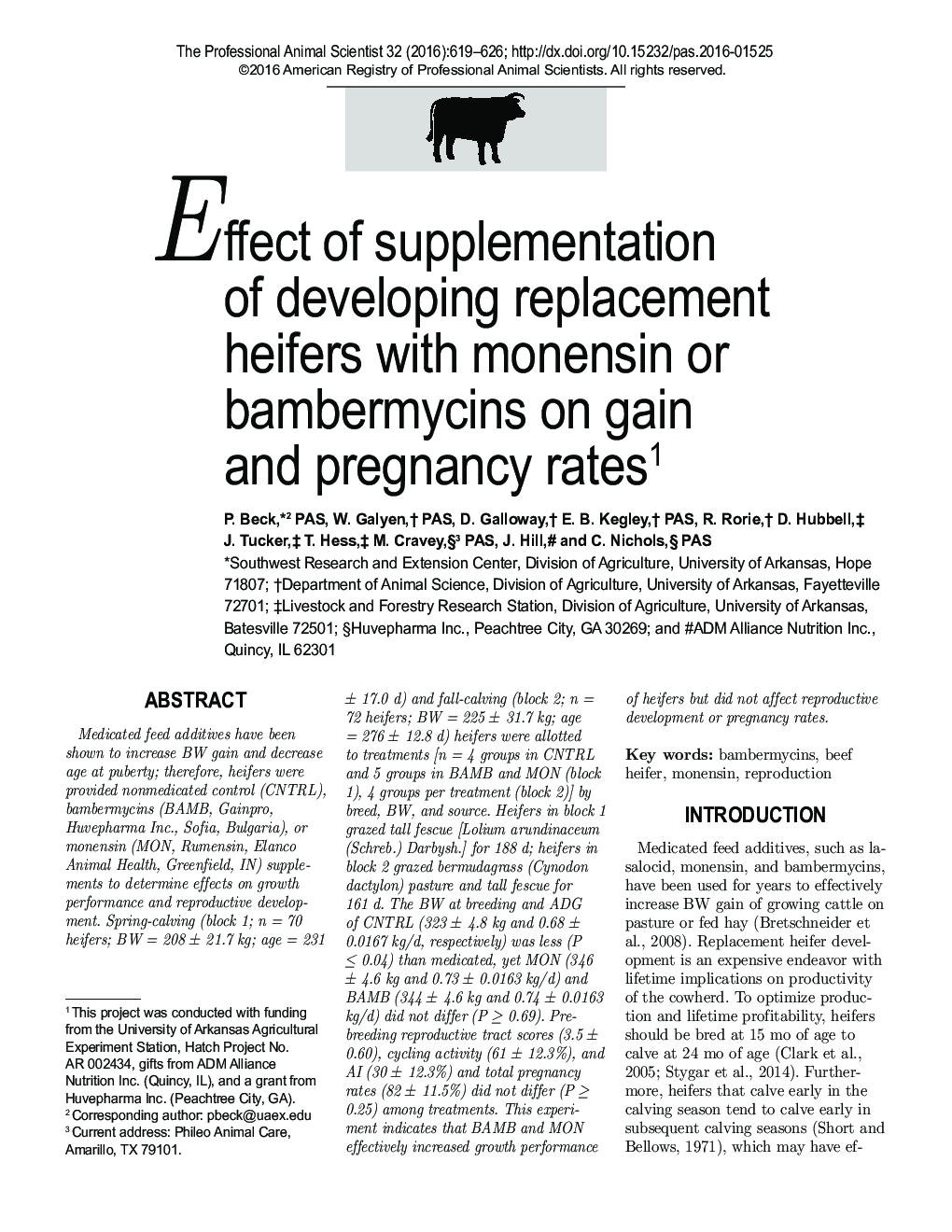| Article ID | Journal | Published Year | Pages | File Type |
|---|---|---|---|---|
| 8503830 | The Professional Animal Scientist | 2016 | 8 Pages |
Abstract
Medicated feed additives have been shown to increase BW gain and decrease age at puberty; therefore, heifers were provided nonmedicated control (CNTRL), bambermycins (BAMB, Gainpro, Huvepharma Inc., Sofia, Bulgaria), or monensin (MON, Rumensin, Elanco Animal Health, Greenfield, IN) supplements to determine effects on growth performance and reproductive development. Spring-calving (block 1; n = 70 heifers; BW = 208 ± 21.7 kg; age = 231 ± 17.0 d) and fall-calving (block 2; n = 72 heifers; BW = 225 ± 31.7 kg; age = 276 ± 12.8 d) heifers were allotted to treatments [n = 4 groups in CNTRL and 5 groups in BAMB and MON (block 1), 4 groups per treatment (block 2)] by breed, BW, and source. Heifers in block 1 grazed tall fescue [Lolium arundinaceum (Schreb.) Darbysh.] for 188 d; heifers in block 2 grazed bermudagrass (Cynodon dactylon) pasture and tall fescue for 161 d. The BW at breeding and ADG of CNTRL (323 ± 4.8 kg and 0.68 ± 0.0167 kg/d, respectively) was less (P ⤠0.04) than medicated, yet MON (346 ± 4.6 kg and 0.73 ± 0.0163 kg/d) and BAMB (344 ± 4.6 kg and 0.74 ± 0.0163 kg/d) did not differ (P ⥠0.69). Prebreeding reproductive tract scores (3.5 ± 0.60), cycling activity (61 ± 12.3%), and AI (30 ± 12.3%) and total pregnancy rates (82 ± 11.5%) did not differ (P ⥠0.25) among treatments. This experiment indicates that BAMB and MON effectively increased growth performance of heifers but did not affect reproductive development or pregnancy rates.
Keywords
Related Topics
Life Sciences
Agricultural and Biological Sciences
Animal Science and Zoology
Authors
P. PAS, W. PAS, D. Galloway, E.B. PAS, R. Rorie, D. Hubbell, J. Tucker, T. Hess, M. PAS, J. Hill, C. PAS,
